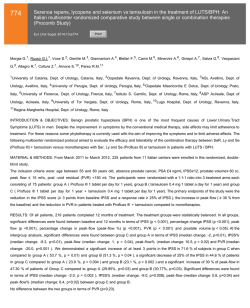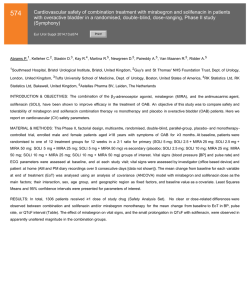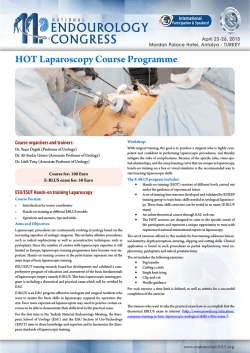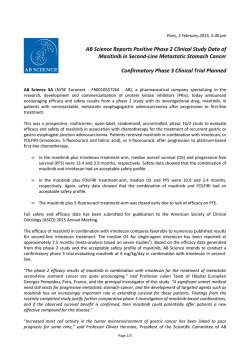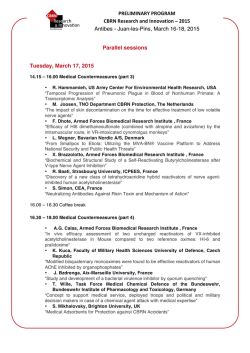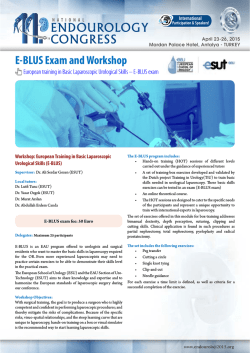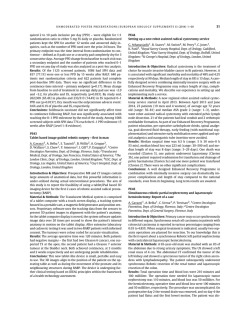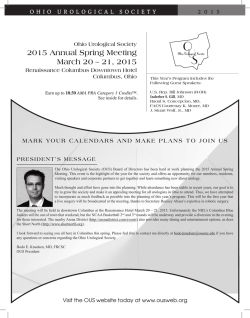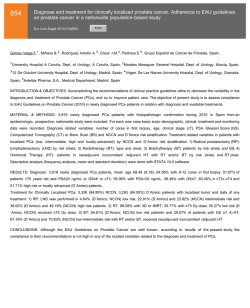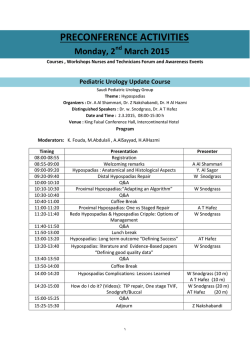
772 Patient satisfaction with the safety and efficacy of fixed-dose
772 Patient satisfaction with the safety and efficacy of fixed-dose combinations of solifenacin and tamsulosin OCAS™: Results from the NEPTUNE II study Eur Urol Suppl 2014;13;e772 Print! Print! Drake M.J.1 , Chapple C.2 , Oelke M. 3 , Drogendijk T.4 , Klaver M. 5 , Van Kerrebroeck P.E.V. 6 1 Southmead Hospital, Dept. of Urology, Bristol, United Kingdom, 2 Royal Hallamshire Hospital and Sheffield Hallam University, Dept. of Urology, Sheffield, United Kingdom, 3 Hannover Medical School, Dept. of Urology, Hanover, Germany, 4 Astellas Pharma Europe B.V., Dept. of Global Data Science, Leiden, The Netherlands, 5 Astellas Pharma Europe B.V., Dept. of Global Clinical Science, Leiden, The Netherlands, 6 Maastricht University Medical Centre, Dept. of Urology, Maastricht, The Netherlands INTRODUCTION & OBJECTIVES: NEPTUNE II was a 40-week, open-label, flexible-dosing phase 3 extension of the 12-week phase 3 NEPTUNE study. NEPTUNE II investigated the long-term safety and efficacy of a fixed-dose combination (FDC) of solifenacin (Soli) and the oral controlled absorption system (OCAS™) formulation of tamsulosin (TOCAS) in men with lower urinary tract symptoms (LUTS) associated with benign prostatic hyperplasia (BPH) who had both storage and voiding symptoms. Patients received FDC Soli 6 mg + TOCAS 0.4 mg (FDC 6 mg) for 4 weeks, after which they could choose to increase the solifenacin dose to 9 mg (FDC 9 mg), then could request to switch between doses at 3-month intervals. The analysis presented here evaluated total IPSS, micturition frequency and patient satisfaction with the FDC dose(s) used during the study. MATERIAL & METHODS: Patients who had completed 12 weeks of double-blind treatment in the NEPTUNE study were eligible for inclusion. Total IPSS, micturition frequency and patients’ opinion of the safety and efficacy of the dose of the study medication taken during the preceding treatment period were assessed at each visit. Post hoc analyses included the proportions of patients achieving total IPSS <8 (no/minor bother) and <8 micturitions/24 h (normal levels) at each visit. RESULTS: Of 1199 patients who completed the 12-week NEPTUNE study, 1067 enrolled into NEPTUNE II, and 1066 received ≥1 dose of open-label FDC therapy in NEPTUNE II. After the 4-week open-label period, 241 patients (23.2%) elected to increase to FDC 9 mg. At the end of the study, 683 patients were taking FDC 6 mg and 297 were taking FDC 9 mg. Overall, mean (SD) total IPSS and micturition frequency were reduced by 9.0 (5.7) points and 2.5 (2.4) episodes/24h, respectively, from baseline in the NEPTUNE study to end of treatment during the NEPTUNE II study. At baseline, 99.9% of patients had a total IPSS ≥13 and 100% had ≥8 micturitions/24 h. At end of treatment, 42.6% of patients had a total IPSS <8 and 37.2% had <8 micturitions/24 h. Overall, 87.1% patients were satisfied with the safety of the dose taken, and 82.9% were satisfied with the efficacy. 78.3% of all patients were satisfied with both the safety and efficacy compared with 81.5% of patients ending the study on the FDC 6 mg. CONCLUSIONS: Clinically relevant reductions in symptoms were obtained with long-term treatment with FDC Soli + TOCAS. A significant proportion of patients achieved normalisation of symptoms, as measured by total IPSS and micturition frequency. In addition, 78% patients were satisfied with both the efficacy and safety of up to 52 weeks FDC Soli + TOCAS.
© Copyright 2024
